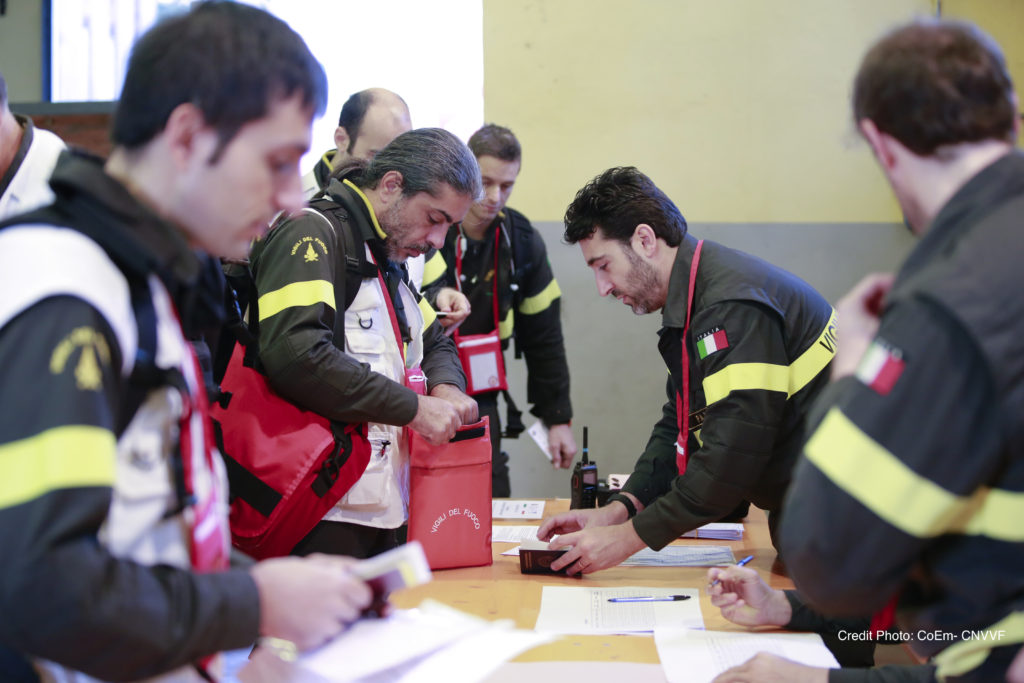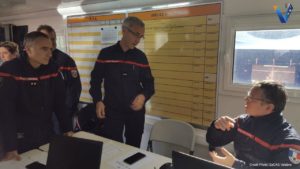
The strategic Consortium is composed by 3 end-users (CNVVF, National Fire and Rescue Service Italy; ERICAM, Emergency and Immediate Response of Madrid Community Spain, EcASC, École d’Application de Sécurité Civile France) and 1 CP Authority (ICPD, Italian Civil Protection Department). Their active contribution leads to: implementing, testing and completing an innovative data management system, “Prometheus,” that has been developed from 0 to alpha version by the CNVVF own resources.
It complements, integrates and improves some areas that remain uncovered by the currently used data management system so as becoming a more effective toolkit for USAR Assessment teams and UCC during the first phase (the so-called “Golden day”) when the toll of victims can be reduced by a more rapid intervention and timely exchange of information flow between the UCC and the deployed teams complementing the assessment phase.
Prometheus is free in order to contribute to the Sendai Framework on DRR also outside the EU, providing low income-countries with an instrument to mitigate emergencies through cooperation and collaboration.
“Prometheus”, as a matter of fact, in its already tested version (beta) is available at the project start and after other two tests (in ES and FR) in the frame of the project, it will be ready in its final version to cover the major needs for a complete site overview (including e-forms, tracking of the teams, clearer outlook of the on-going activities by assigned sector etc.).

“Prometheus” will provide a more complete site overview in support of the disaster managers (decision making process/command chain) and of the USAR assigned teams to a sector while carrying out the operations (including audio from structural triage, photos, interview forms from the affected site). The gathered information may be also tailored according to a specific need either of the coordination or of the Rescue Team leader because “Prometheus” is more manageable, complete, accessible and inclusive in comparison with systems used so far. And these features are its added value being its applicability wide in a range of emergencies where timing of intervention is a key issue.
The project is deeply supported by three National Civil Protection Authorities. ERICAM and EcASC relevantly contribute to the testing phase while the whole Consortium is engaged in a dissemination campaign led by ICPD and conducted at national, European and international level as the four beneficiaries are part of networks, working groups, international advisory boards (i.e. INSARAG AEME Group is chaired by IT, FR and ES INSARAG focal points, MODEX). The CNVVF leads the Consortium and the implementation phase capitalising the work done so far with own resources and previous DG ECHO contribution to test “Prometheus” alpha version.
Furthermore, the project also capitalizes some results coming from the DG ECHO co-funded BELICE project also led by the CNVVF. In particular, BELICE plug-in.
The plug-in created within the BELICE project aims to have a primary sectorisation of an area following a seismic event, by means of automatic routing and using only data that is freely available on the network anywhere in the world. This tool can be extremely important in all cases where local authorities do not have any sectorization at all.
In the plug-in the sectors are divided into 4 priority categories according to the severity of the seismic shock and the population density of each sector, the priority identification is displayed on the map with colours:
- red – extreme priority
- orange – high priority
- green – medium priority
- white – low priority
The data coming out of the plug-in can be exported in kmz and/or Geojson format importable by Prometheus software. BELICE plug-in can be downloaded from the project site at the following link: https://www.beliceproject.eu/download-area/
